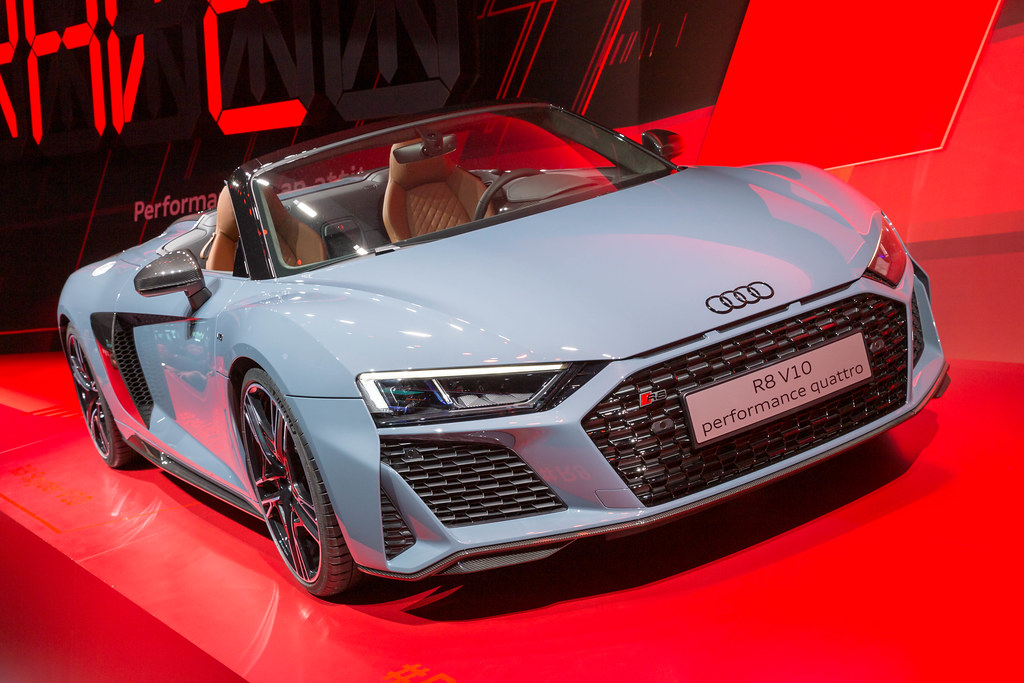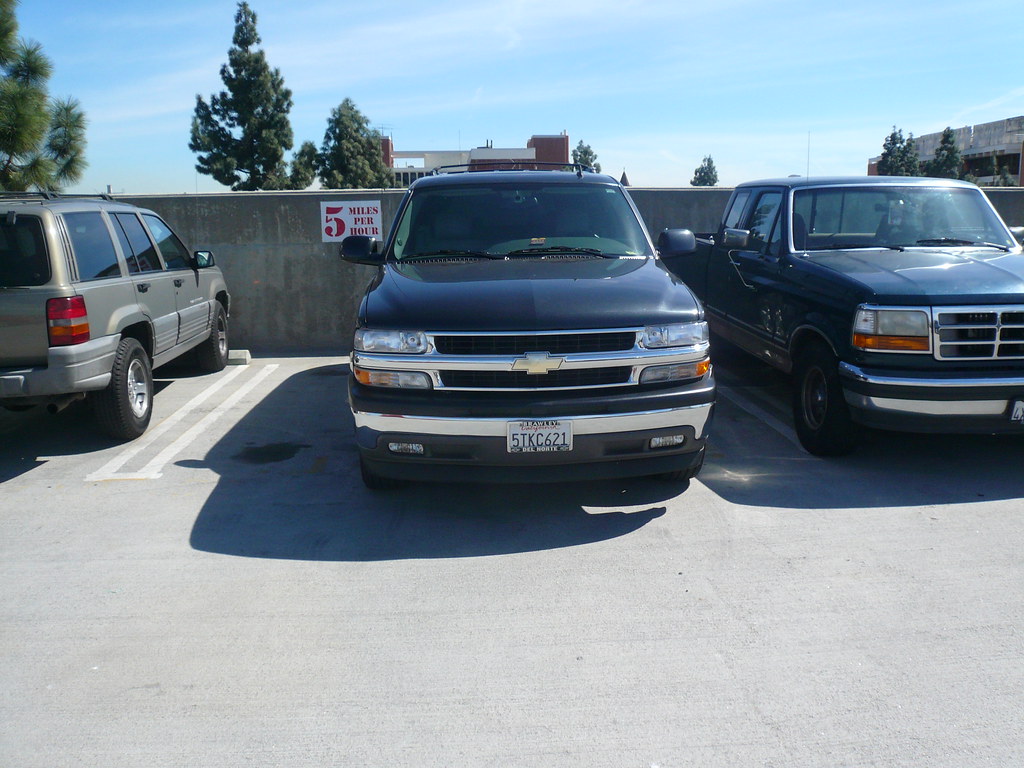
The automotive world is accelerating at an unprecedented pace, with 2025 and 2026 shaping up to be pivotal years for sport-utility vehicles and crossovers. Buyers are increasingly looking for a blend of efficiency, cutting-edge technology, and enhanced comfort, and manufacturers are responding with an exciting lineup of models that promise to redefine what we expect from our vehicles.
From all-electric flagships pushing the boundaries of range to efficient hybrids offering unparalleled flexibility, and tech-laden crossovers brimming with smart features, the upcoming years will see a diverse and competitive field. This exhaustive guide is designed to help you navigate the landscape, covering the most anticipated models, foundational technological shifts, and essential buying advice to ensure you’re prepared to choose the right SUV for your needs.
We’ll dive deep into specific contenders, examine the broader trends shaping the industry, and highlight the innovations that will make these vehicles stand out. Whether you prioritize eco-conscious driving, long-distance practicality, or premium features, the 2025-2026 lineup offers a highly competitive selection that demands attention.
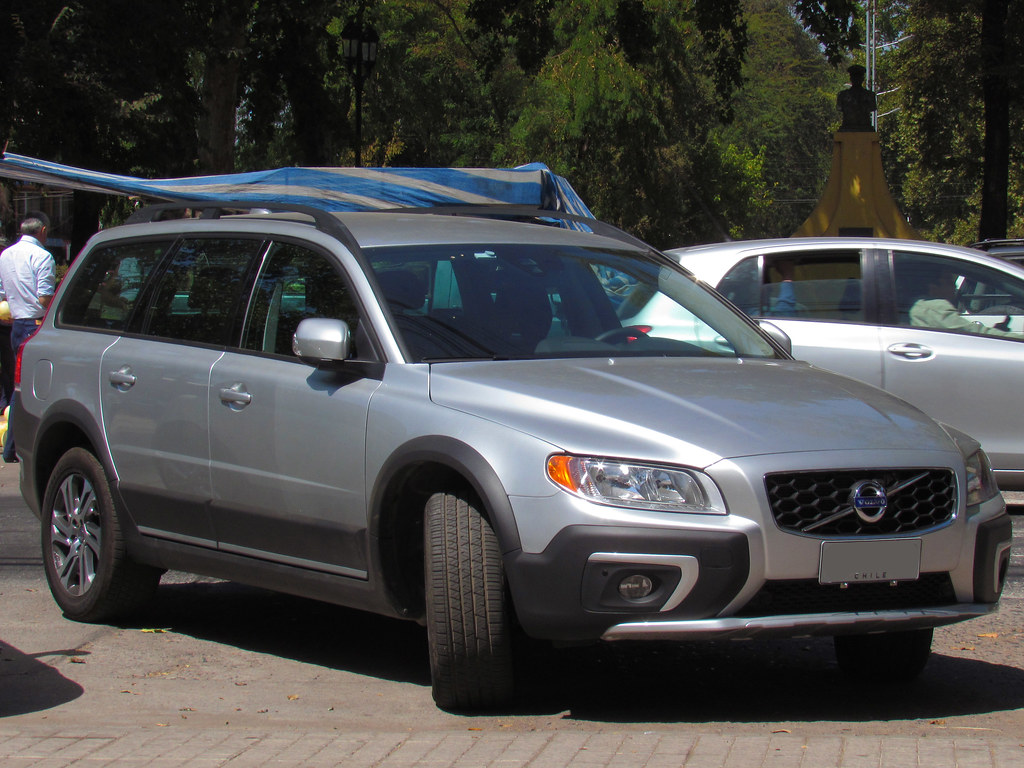
1. **Volvo XC70 – Extended-Range Plug-in Hybrid: A Practical, Eco-Conscious Choice**The Volvo XC70 is poised to make a significant impact in the 2026 conversation, offering a compelling blend of practicality and environmental consciousness. This extended-range plug-in hybrid stands out with its class-leading electric-only capability, making it an excellent option for daily commutes that prioritize pure electric power. It’s a vehicle designed for those who desire the benefits of electric driving without the lingering concern of range anxiety on longer journeys.
With an exceptional electric range of 124 miles, the XC70 redefines what’s possible for a plug-in hybrid. This impressive figure ensures that most daily commutes can be completed without consuming a single drop of gasoline, significantly reducing both fuel costs and carbon footprint. For families and commuters, this translates into substantial real-world savings and a greener driving experience, truly embodying the ethos of modern sustainable mobility.
Underpinning this performance is Volvo’s SMA-based architecture, a platform engineered to strike an optimal balance between vehicle weight, overall efficiency, and, crucially, occupant safety. The interior reflects classic Scandinavian minimalism, characterized by clean lines and intuitive design. Furthermore, the use of sustainable fabrics throughout the cabin and roomy second-row seating underscore Volvo’s commitment to both luxury and responsible design, creating a comfortable and inviting space for all passengers.
For anyone considering a hybrid but not ready to commit to a fully electric vehicle, the Volvo XC70 presents an extremely strong case. It offers the best of both worlds: robust electric range for everyday use and the reliability of an engine backup for extended trips. This model is perfectly suited for those who demand flexibility and efficiency from their next SUV.
Car Model Information: 2015 Volvo XC70 T6 Premier Plus
Categories: All article disambiguation pages, All disambiguation pages, Disambiguation pages, Short description is different from Wikidata
Summary: Volvo XC70 may refer to:
Volvo XC70 (2025)
Volvo V70/XC70, 2003 to 2016
Get more information about: Volvo XC70
Buying a high-performing used car >>>
Brand: Volvo Model: XC70
Price: $13,950 Mileage: 144,352 mi.
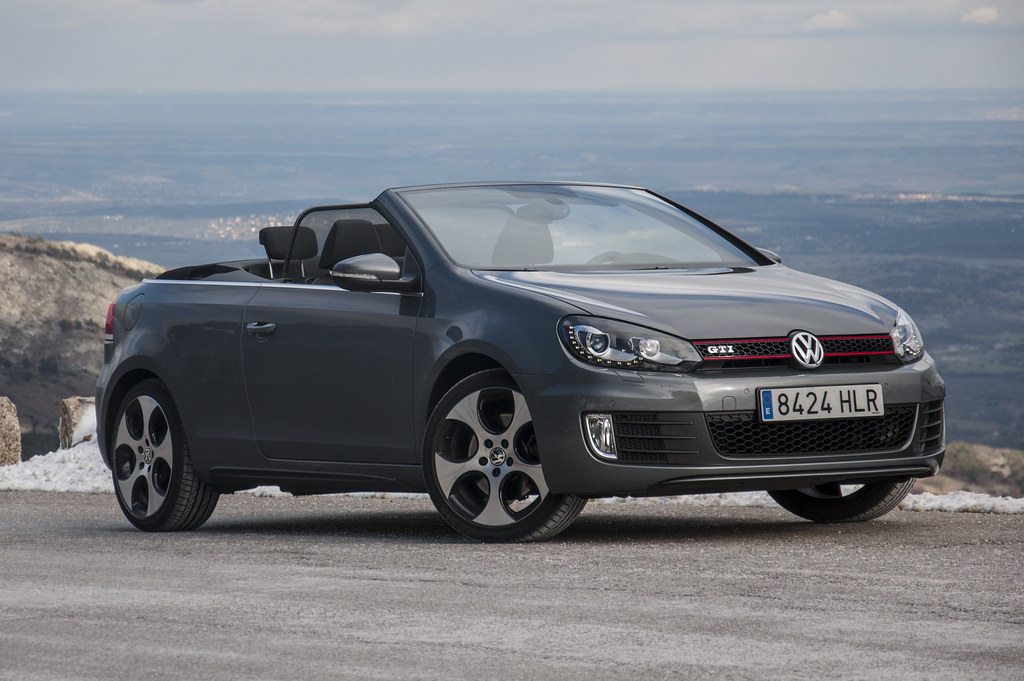
2. **Volkswagen ID Era – Compact Plug-in Hybrid: Affordable Innovation for Urban Drivers**Developed in partnership with SAIC specifically for global markets, the Volkswagen ID Era aims to bring technology-forward features into an affordable, accessible package. This compact plug-in hybrid is set to attract a new wave of buyers looking for a smart, economical, and urban-friendly solution. Its strategic design and competitive pricing make it a noteworthy contender for those entering the EV or hybrid market in 2026.
The ID Era boasts a commendable 100-mile electric range, a figure that is more than suitable for everyday urban use and short commutes. This significant electric-only capability allows drivers to handle most of their daily errands and work trips without relying on gasoline, contributing to lower running costs and a reduced environmental footprint. It’s a practical choice for city dwellers who want efficiency without compromise.
One of the key selling points of the Volkswagen ID Era will be its competitive pricing. By offering advanced features and a substantial electric range at an attractive price point, VW aims to democratize access to hybrid technology, making it a viable option for a wider audience. This approach is expected to resonate strongly with first-time EV or hybrid buyers who are looking for value without sacrificing innovation.
Despite its compact footprint, the ID Era showcases clever packaging that maximizes both cargo and passenger space. This intelligent design ensures that while the vehicle is agile enough for urban environments, it doesn’t skimp on the practicality that SUV buyers expect. The focus on thoughtful interior layout means comfortable seating and ample storage, making it a versatile choice for small families or individuals with active lifestyles.
Car Model Information: 2024 BMW X5 sDrive40i
Categories: Articles with short description, Battery electric vehicles, CS1 Chamorro-language sources (ch), CS1 German-language sources (de), CS1 uses Chinese-language script (zh)
Summary: The Volkswagen ID. series is a family of battery electric cars from Volkswagen (VW) using its MEB platform that is developed by the Volkswagen Group for a range of vehicles.
Deliveries began in late 2020. By November 2022, half a million vehicles had been delivered.
Get more information about: Volkswagen ID. series
Buying a high-performing used car >>>
Brand: Volkswagen Model: ID Era
Price: $37,758 Mileage: 39,959 mi.
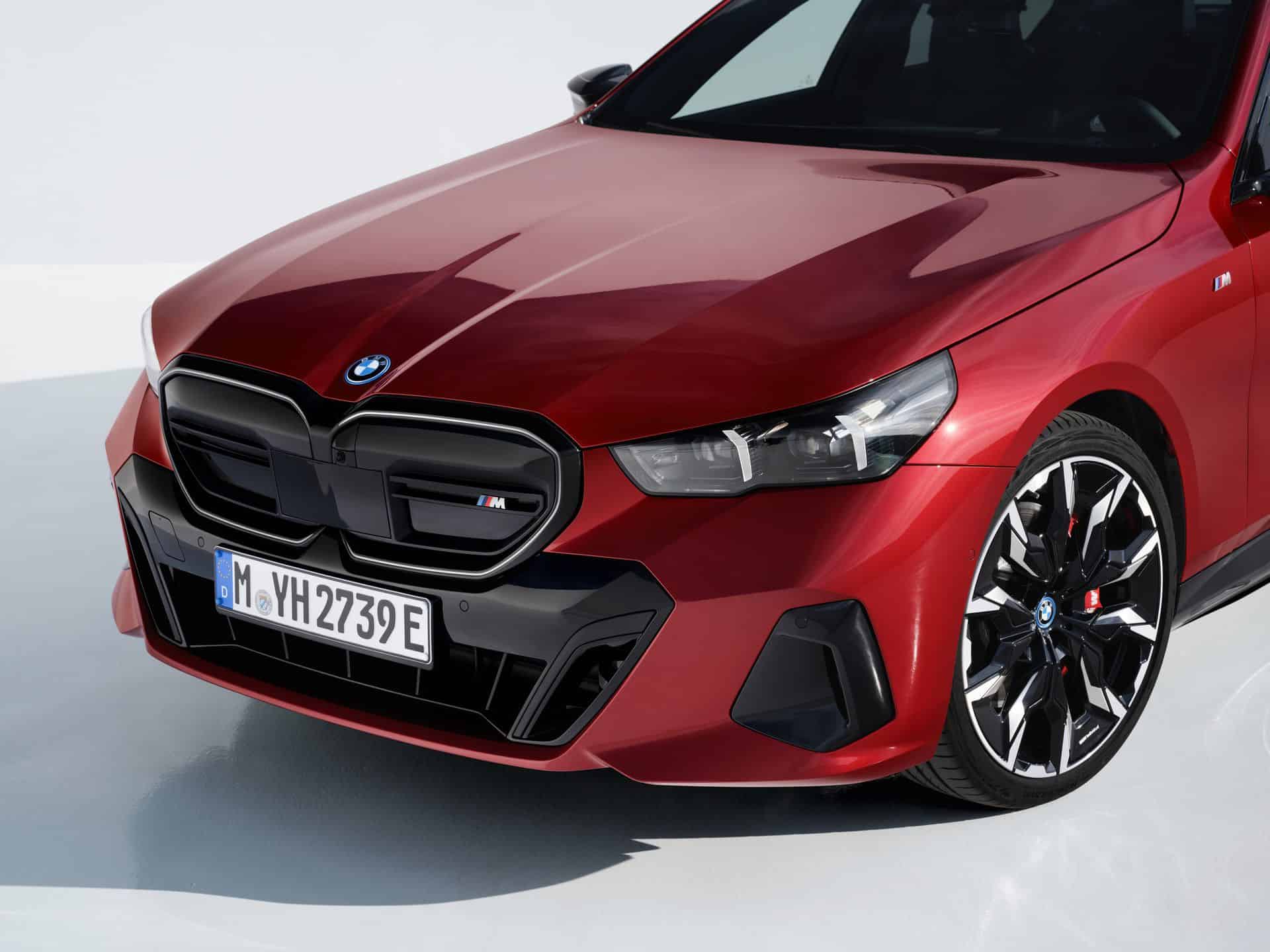
3. **BMW X8 – All-Electric Luxury SUV: Performance Meets Refinement**BMW’s X8 represents the brand’s bold push into the high-end electric SUV segment, with a clear focus on delivering both exhilarating performance and unparalleled refinement. This all-electric luxury SUV is engineered to compete directly with other premium EV SUVs, promising a driving experience that is quintessentially BMW, but powered by the latest in electric technology. It’s designed for discerning buyers who demand top-tier luxury and dynamic capability.
The X8 is expected to offer an approximate electric range of 300 miles, positioning it firmly among the leaders in the premium EV SUV category. This extensive range provides ample confidence for long-distance travel, making it a practical choice for road trips and daily commutes alike. Drivers can expect to go further on a single charge, minimizing range anxiety and maximizing convenience, a critical factor for luxury electric vehicles.
Performance is a cornerstone of the BMW X8’s appeal. It will feature multiple power outputs, allowing drivers to choose a configuration that best suits their driving style. This will be complemented by adaptive suspension and dynamic driving modes, ensuring a responsive and engaging experience whether cruising on the highway or navigating winding roads. BMW’s expertise in chassis tuning is expected to deliver a truly sporty yet comfortable ride.
Technologically, the X8 is set to be a showcase of BMW’s innovation. It will incorporate autonomous-ready hardware, laying the groundwork for future advancements in self-driving capabilities. Beyond this, an advanced infotainment system and a comprehensive suite of driver-assist features will provide both entertainment and enhanced safety. The X8 promises a connected and intuitive user experience that aligns with modern luxury expectations.
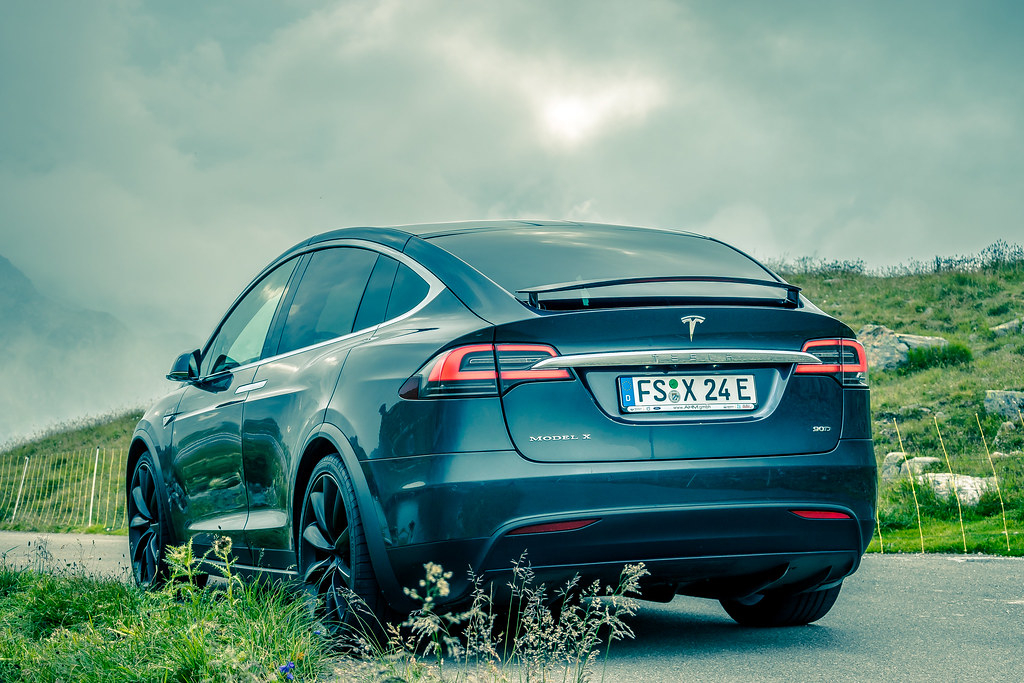
4. **Tesla Model X (2026) – Longest-Range Luxury EV: Software-First Evolution**Tesla’s 2026 refresh of the Model X continues the brand’s pioneering focus on software-first vehicles, promising a significant leap forward in electric range and an improved Full Self-Driving (FSD) suite. This update reaffirms the Model X’s position as a leader in the luxury EV segment, appealing to buyers who prioritize cutting-edge technology, unparalleled range, and a futuristic driving experience. The 2026 Model X is not just an update; it’s an evolution.
Anticipated to deliver an impressive 360-mile electric range, the refreshed Model X is poised to offer one of the highest ranges in the entire SUV segment for 2026. This class-leading capability translates directly to greater freedom and convenience for drivers, making long journeys effortless and daily charging less frequent. For many, this range will effectively eliminate any lingering concerns about electric vehicle practicality.
The interior of the 2026 Model X is expected to retain its signature futuristic layout, characterized by minimalist design and a large central touchscreen that controls most vehicle functions. This approach emphasizes a clean, uncluttered cabin that feels both modern and spacious. Furthermore, Tesla’s commitment to over-the-air (OTA) improvements means that the vehicle will continually evolve, gaining new features and enhancements throughout its lifespan, keeping it current and competitive.
Beyond range and interior design, the improved advanced driver assistance features, including the enhanced FSD capabilities, remain a core draw. Tesla continues to push the boundaries of what’s possible in vehicle autonomy, offering features designed to make driving safer and less strenuous. The continuous refinement of these systems through software updates means that the Model X experience will only get better with time, solidifying its appeal to tech-savvy consumers.
Car Model Information: 2024 Subaru Outback Premium
Name: Tesla Model X
Manufacturer: Tesla, Inc.
Production: 2015–present
Assembly: unbulleted list
Designer: Franz von Holzhausen
Class: Crossover (automobile)
BodyStyle: 5-door SUV
Layout: unbulleted list
Doors: unbulleted list
Related: Tesla Model S
Motor: unbulleted list
Title: Discontinued
Transmission: unbulleted list
Battery: unbulleted list
ElectricRange: FTP-75
Wheelbase: cvt
Length: cvt
Width: cvt
Height: cvt
Weight: unbulleted list
Sp: us
Categories: 2020s cars, All Wikipedia articles in need of updating, All Wikipedia articles written in American English, All articles containing potentially dated statements, All articles lacking reliable references
Summary: The Tesla Model X is a battery electric mid-size luxury crossover SUV built by Tesla, Inc. since 2015. Developed from the full-sized sedan platform of the Tesla Model S, the vehicle uses distinctive falcon wing doors for rear passenger access.
The Model X has an EPA size class as an SUV, and shares around 30 percent of its content with the Model S, half of the originally planned 60 percent, and weighs about 10 percent more. Both the Model X and Model S are produced at the Tesla Factory in Fremont, California. The prototype was unveiled at Tesla’s design studios in Hawthorne, California, on February 9, 2012. First deliveries of the Model X began in September 2015. After one full year on the market, in 2016, the Model X ranked seventh among the world’s best-selling plug-in cars. A refresh of the Tesla Model X was introduced in 2021, offering a new “Plaid” performance model, along with a revised interior, powertrain, and suspension.Another update of the Model X was introduced in June 2025 with a new front bumper camera, new wheel designs, increased third-row space, dynamic ambient lighting, and adaptive headlights. The updates are similar to the Model S, which was updated at the same time.
As of July 2025, the Model X is available as a Long-Range version with an estimated EPA range of 352 miles (566 km) and a high performance “Plaid” version with an estimated EPA range of 335 miles (539 km).
Get more information about: Tesla Model X
Buying a high-performing used car >>>
Brand: Tesla Model: Model X
Price: $28,398 Mileage: 29,085 mi.
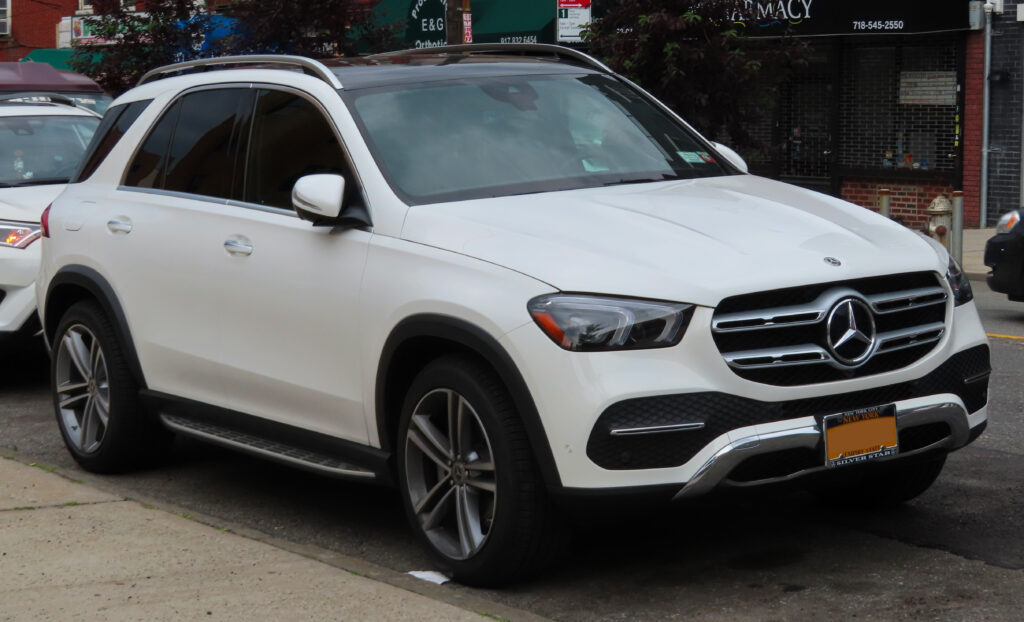
5. **Mercedes-Benz GLE EV – Premium Electric Comfort: Refined Luxury and Advanced Safety**The Mercedes-Benz GLE EV is set to carve out its niche as a premium electric SUV that places a strong emphasis on luxury, comfort, and advanced driver assistance, all wrapped in a highly refined package. This model is designed for buyers who appreciate the finer things in life and expect a serene, secure, and technologically sophisticated driving experience. It’s a Mercedes-Benz through and through, but reimagined for the electric age.
With an estimated electric range of approximately 280 miles, the GLE EV offers more than enough capability for the majority of buyers who prioritize comfort and technology in their daily driving. This substantial range ensures practical usability for most commutes and weekend trips, allowing drivers to enjoy the premium experience without constant range anxiety. It strikes a balanced approach, delivering ample range without necessarily chasing the absolute highest numbers.
Inside, the GLE EV will feature high-grade interior materials, a hallmark of Mercedes-Benz luxury. This includes premium sound systems that deliver an immersive audio experience, complementing the tranquil cabin environment. Every detail, from the stitching to the tactile quality of the controls, is meticulously crafted to provide an atmosphere of opulence and comfort, ensuring a truly first-class experience for occupants.
A comprehensive suite of safety features is expected to be standard, reinforcing Mercedes-Benz’s reputation for safety innovation. This includes the latest in advanced driver assistance systems designed to prevent accidents and protect occupants. The combination of advanced luxury, a comfortable ride, and state-of-the-art safety technologies makes the GLE EV a compelling choice for those seeking a sophisticated electric SUV that doesn’t compromise on traditional premium attributes.
Car Model Information: 2024 Subaru Outback Premium
Name: Mercedes-Benz G-Class EV
Caption: Mercedes-Benz Concept EQG
Manufacturer: Mercedes-Benz Group
Production: concept car
Class: Mid-size,luxury SUV
BodyStyle: SUV
Layout: 4MATIC
Motor: Permanent-magnet synchronous motor
Battery: 116 kWh
Range: 434-473 km
ElectricRange: convert
Wheelbase: 2890 mm
Abbr: on
Length: 4624 mm
Width: 1931 mm
Height: 1986 mm
Weight: 3085 kg
Designer: Gorden Wagener
Factory: Graz
Transmission: 2-speed direct-drive automatic
Categories: Articles with short description, Commons category link from Wikidata, Mercedes-Benz G-Class, Mercedes-Benz vehicles, Mercedes-EQ
Summary: The Mercedes-Benz G-Class EV (formerly known as Mercedes-Benz EQG) is an electric mid-size luxury SUV concept unveiled by German automobile manufacturer Mercedes-Benz. It is part of the EQ family, a range that will expand to include 10 new models by 2022. The EQG is based on the existing conventional ICE powered second-generation Mercedes G-Class.
Get more information about: Mercedes-Benz G-Class EV
Buying a high-performing used car >>>
Brand: Mercedes-Benz Model: GLE EV
Price: $28,398 Mileage: 29,085 mi.
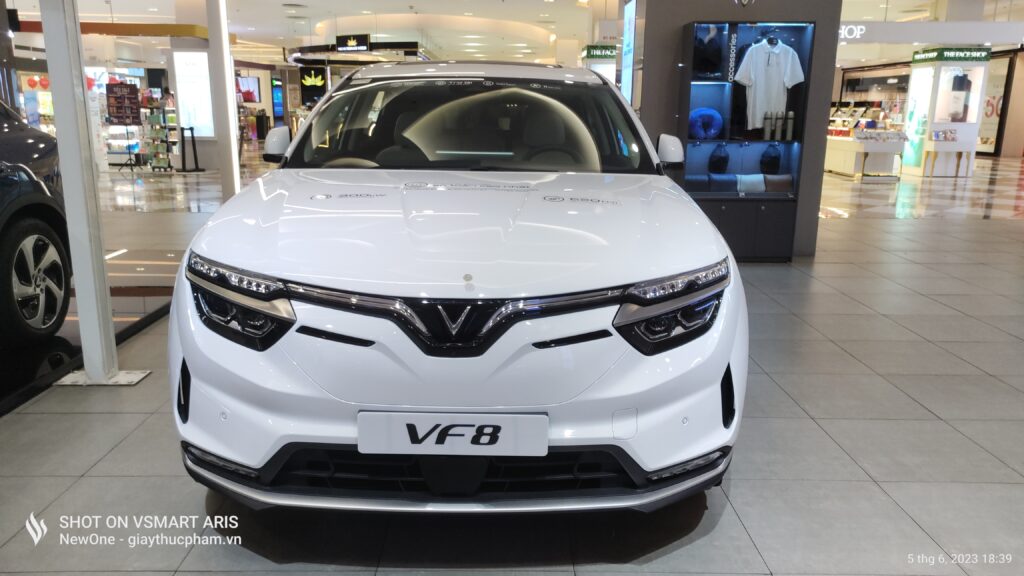
6. **Longer Electric Ranges: The New Benchmark for Electric SUVs**As we look toward 2026, one of the most significant advancements shaping the best SUV candidates is the continuous expansion of electric range. This isn’t just about covering more miles; it’s about fundamentally changing the practicality and appeal of electric vehicles for a broader audience. The days of limited range anxiety are rapidly becoming a thing of the past, as manufacturers push the boundaries of battery technology and efficiency.
Many 2026 SUVs are projected to comfortably exceed 200 miles of electric range, making them highly viable for most daily driving needs. More impressively, premium models are setting their sights even higher, aiming to push well beyond 300 miles. This extended capability means fewer charging stops, greater flexibility for longer journeys, and a driving experience that increasingly mirrors — or even surpasses — the convenience of gasoline vehicles.
The push for longer ranges is driven by a combination of factors. Solid-state battery research holds significant promise, aiming to deliver faster charging times and vastly improved energy density compared to current lithium-ion technology. While still scaling for mass-market production, several OEMs plan pilot runs by 2026, signaling a potential paradigm shift in battery performance and vehicle design.
Beyond raw battery chemistry, advancements in range-optimizing software play a crucial role. Intelligent energy management systems learn driving patterns and environmental conditions to maximize efficiency. Furthermore, improved vehicle aerodynamics, reducing drag and air resistance, and sophisticated heat management systems for battery packs contribute significantly to extending usable range. These holistic improvements are collectively enabling the impressive range figures we expect to see in 2026 SUVs.
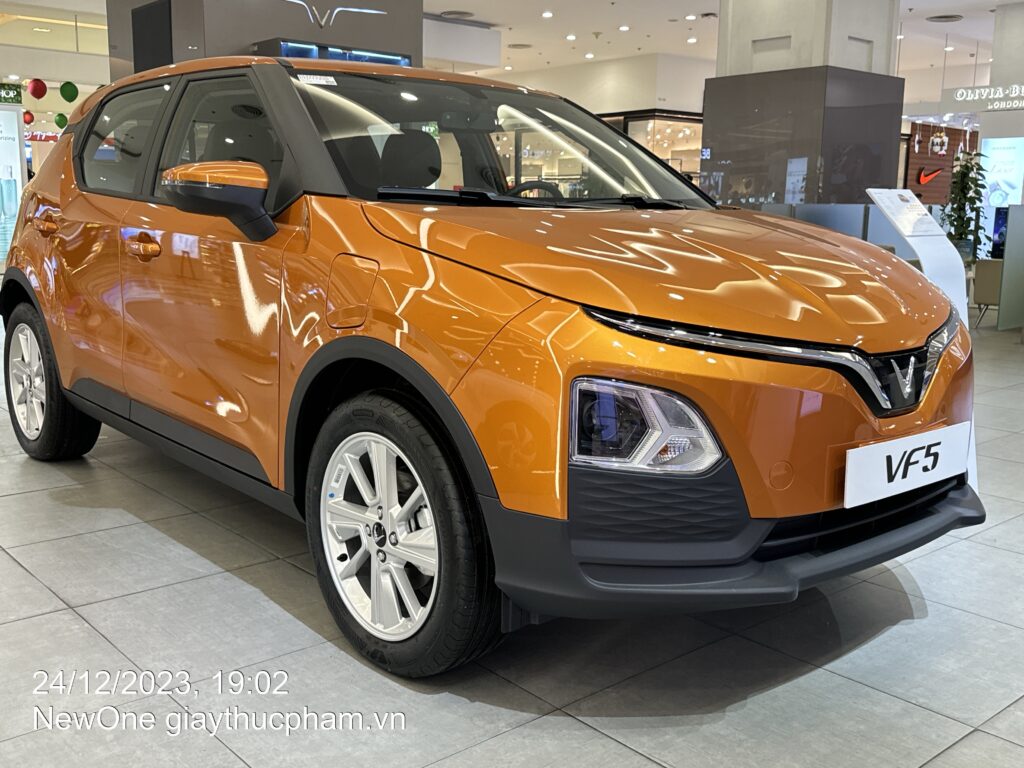
7. **Hybrid and Plug-in Hybrid Dominance: Bridging the Gap to Full Electrification**While all-electric vehicles capture much of the headlines, hybrid and plug-in hybrid (PHEV) powertrains are set to maintain their significant dominance in the 2026 SUV market. These vehicles offer a compelling middle ground, providing the environmental benefits and efficiency of electric propulsion for daily commutes, combined with the reassuring flexibility of a traditional internal combustion engine for longer distances or when charging infrastructure is scarce.
PHEVs, in particular, will remain highly attractive to buyers who need the versatility of electric-only commuting for their regular routines, but also require the assurance of an engine backup for extended trips without the need for frequent public charging. This adaptability makes them an ideal choice for a diverse range of driving habits, appealing to those who aren’t quite ready to fully commit to an all-electric lifestyle but want to embrace greener motoring.
An interesting evolution within this segment is the rise of range-extender hybrids, exemplified by concepts like the Volvo XC70. These systems combine a robust electric range, often capable of handling most daily driving on pure electric power, with a small, efficient gasoline engine that acts purely as a generator to replenish the battery or provide power when the electric charge runs low. This effectively eliminates range anxiety entirely, offering the best of both worlds.
For consumers, the continued innovation in hybrid technology means a wider array of choices tailored to specific needs and preferences. Whether it’s a traditional hybrid optimizing fuel economy, a PHEV offering significant electric-only operation, or a range-extender providing ultimate flexibility, these powertrains ensure that efficient and adaptable options will be plentiful, solidifying their critical role in the automotive landscape of 2026 and beyond.
The advancements defining the 2026 SUV landscape extend far beyond just powertrains and ranges. As we move deeper into this transformative era of automotive innovation, a host of technological breakthroughs are poised to enhance everything from driving safety and interior comfort to connectivity and long-term value. These emerging features are not merely incremental upgrades; they represent a fundamental rethinking of the vehicle experience, setting new benchmarks for what consumers can expect from their next SUV or crossover. Let’s explore these critical innovations that will shape your driving future.
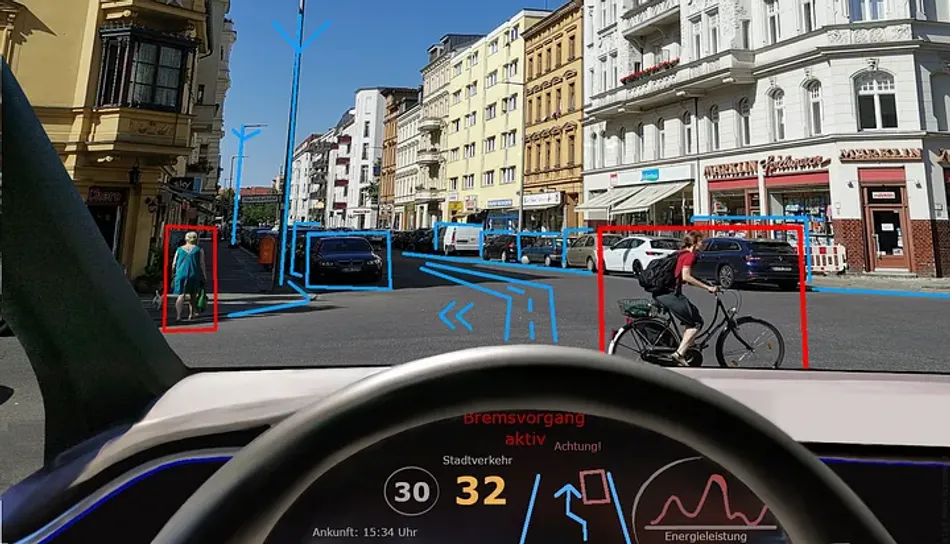
8. **Enhanced Autonomous Driving Features: Beyond Cruise Control**As the automotive industry progresses, the conversation around autonomous driving features is shifting from hypothetical concepts to real-world applications. For 2026, buyers can anticipate a broader availability of advanced Level 2 and Level 3 systems, making semi-autonomous driving more accessible and refined than ever before. These systems are designed to reduce driver fatigue and enhance safety on long journeys and in congested traffic.
These sophisticated features include advanced adaptive cruise control, which intelligently maintains a safe distance from the vehicle ahead, seamlessly adjusting speed. Lane-centering capabilities work in tandem to keep the vehicle precisely within its lane markers, providing a more stable and less demanding driving experience. Furthermore, some premium trims will offer hands-free highway driving, allowing drivers to momentarily relinquish control under specific conditions, fostering a new level of convenience.
Crucially, the safety aspect of these autonomous systems is paramount. Improved driver monitoring systems are being integrated to ensure the driver remains attentive and ready to take over when necessary, forming a critical safeguard. Enhanced redundancy for safety-critical functions ensures that even if one component fails, backup systems are in place to maintain control and prevent incidents, bolstering overall vehicle reliability.
One of the most exciting developments is the capability for over-the-air (OTA) updates. This means that after purchase, your vehicle’s autonomous features can be refined, expanded, and even gain new functionalities through software updates. Your SUV won’t just get older; it will continually evolve and improve, keeping its cutting-edge technology fresh and competitive for years to come, truly defining a software-first approach to vehicle ownership.
Read more about: Consumer Reports Guide: Top 14 Cars of 2024-2025 Redefining Safety with Cutting-Edge Technology and Unbiased Crash Test Results
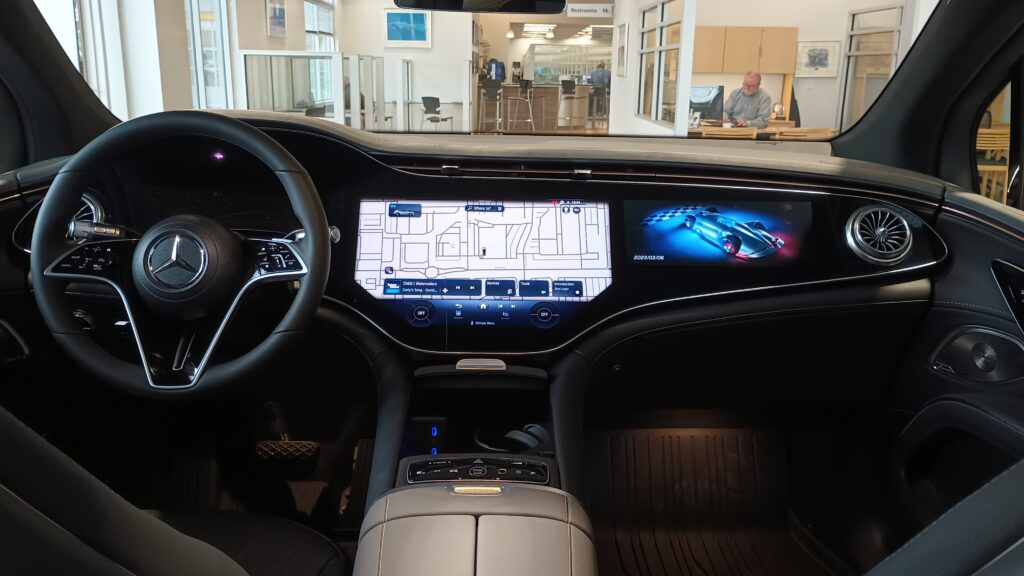
9. **Luxury, Comfort, and Sustainable Interiors: A New Definition of Premium**In 2026, the concept of luxury and comfort in SUV interiors is undergoing a significant evolution, with a strong emphasis on sustainability. Manufacturers are now meticulously crafting premium cabins that not only offer unparalleled comfort and aesthetic appeal but also demonstrate a profound commitment to environmental responsibility. This harmonious blend ensures that elegance no longer comes at the expense of ecological consciousness.
Expect to see widespread adoption of innovative, eco-friendly materials. This includes a growing use of recycled plastics, transformed into high-quality, durable components that don’t compromise on appearance or feel. Furthermore, vegan leathers are becoming increasingly sophisticated, offering the luxurious texture and durability of traditional leather without animal products, appealing to a broader, ethically-minded consumer base. Natural fibers, such as wood and bamboo, are also being integrated, adding a touch of organic elegance and reducing the reliance on conventional materials.
These sustainable material choices are not just about environmental virtue signaling; they genuinely contribute to a more refined and healthier cabin environment. The absence of certain chemical treatments often associated with traditional materials can lead to improved air quality inside the vehicle. Additionally, the tactile experience of these new materials is often unique and pleasing, distinguishing modern luxury from its predecessors.
Ultimately, this focus on sustainable interiors means that drivers and passengers alike can enjoy a guilt-free luxury experience. The upcoming SUVs are designed to be sanctuaries of comfort and sophistication, reflecting a forward-thinking approach that marries opulence with ethical design. It’s a clear indication that premium isn’t just about lavishness; it’s about responsible innovation and a mindful connection to the world around us.
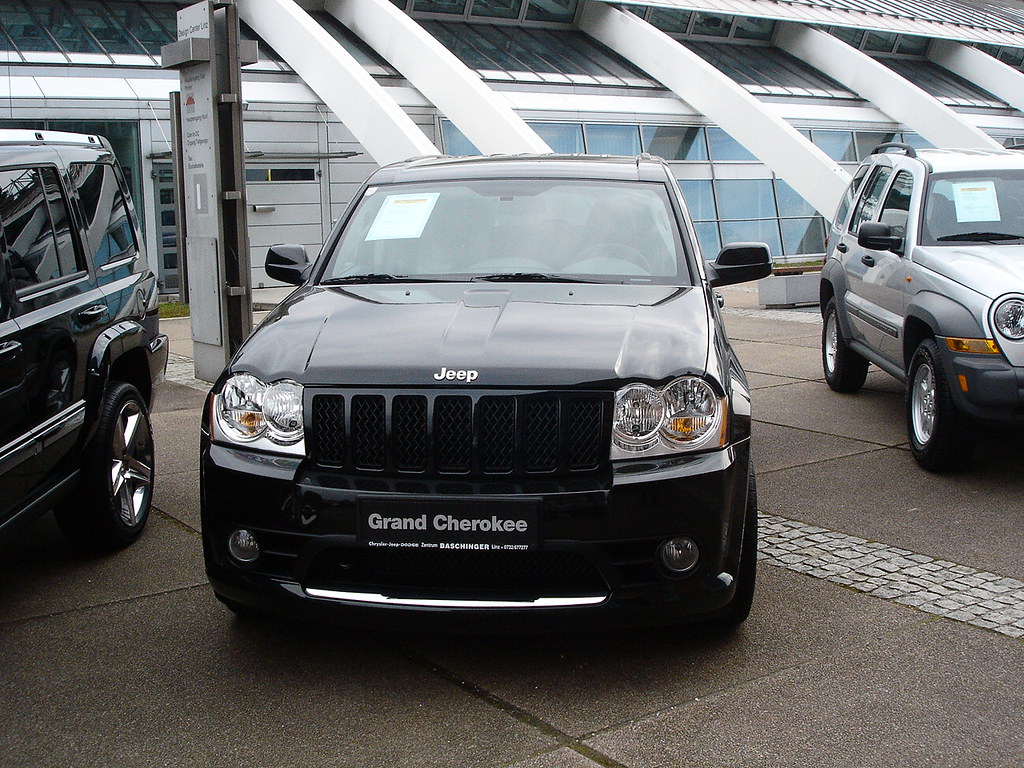
10. **Improved Safety Technologies: Proactive Protection for Every Journey**Safety has always been a cornerstone of SUV design, but for 2026, manufacturers are raising the bar with state-of-the-art Advanced Driver Assistance Systems (ADAS) becoming standard equipment across an even wider range of trims. This widespread integration means that advanced accident prevention and occupant protection features are no longer exclusive to top-tier models, making safer driving accessible to more consumers.
The suite of advanced safety features is growing more comprehensive and intelligent. Driver monitoring systems, for instance, utilize sophisticated sensors and cameras to track driver attention, ensuring vigilance and intervening with alerts if signs of fatigue or distraction are detected. Night-vision technology enhances visibility in low-light conditions, identifying pedestrians and animals long before they enter the standard headlight beam, giving drivers crucial extra seconds to react.
Beyond monitoring the driver and immediate surroundings, external object recognition systems are becoming incredibly precise. These systems can identify potential hazards, from small debris on the road to oncoming vehicles, and provide timely warnings or even initiate emergency braking or steering assistance. This proactive approach significantly reduces the likelihood of accidents, transforming the vehicle into a vigilant co-pilot always scanning for danger.
The collective impact of these improved safety technologies is a profound increase in occupant protection and overall road safety. By leveraging cutting-edge sensors, sophisticated algorithms, and seamless integration, 2026 SUVs are engineered to anticipate and mitigate risks more effectively than ever before. This commitment to advanced safety ensures that every journey can be undertaken with greater peace of mind, reinforcing the SUV’s reputation as a secure family vehicle.
Read more about: Beyond the Dashboard: Unveiling 9 Life-Saving Car Features Drivers Don’t Use or Even Know Exist
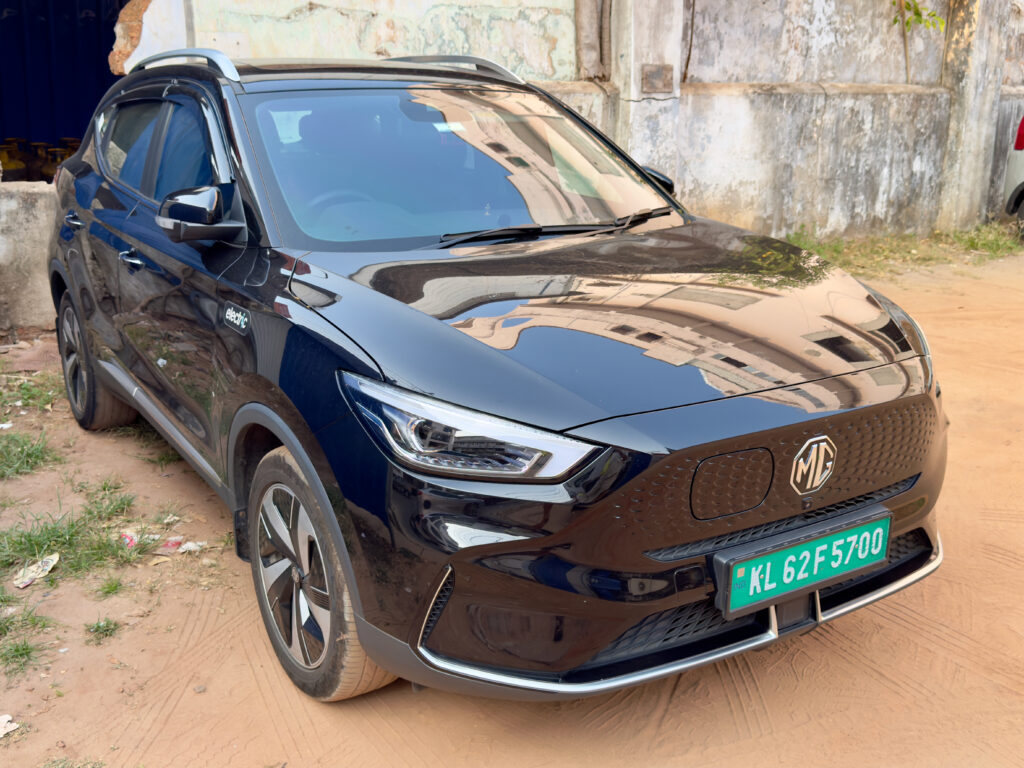
11. **Solid-State Batteries: The Next Frontier in EV Performance**While current lithium-ion batteries have powered the initial wave of electric vehicles, the horizon for 2026 is illuminated by the promise of solid-state battery technology. This isn’t just an incremental improvement; it represents a potential paradigm shift in energy storage, promising to unlock new levels of performance and practicality for electric SUVs. The research and development in this area are reaching critical milestones.
The core benefits of solid-state chemistry are incredibly compelling. Firstly, these batteries aim to achieve significantly increased energy density, meaning more power can be packed into a smaller, lighter physical footprint. This translates directly to longer electric ranges for vehicles, potentially pushing well beyond current benchmarks without adding bulk. Imagine an SUV with an even more extensive range, without a heavier battery pack.
Secondly, solid-state batteries hold the promise of vastly reducing charging times. Current EV charging, while improving, still requires more time than refueling a gasoline car. Solid-state technology is being developed to handle much higher charging rates, potentially allowing for incredibly rapid recharges that could bring EV charging closer to the convenience of a traditional fuel stop, thereby alleviating one of the primary concerns for potential EV buyers.
While scaling for mass-market production remains a significant engineering challenge, several Original Equipment Manufacturers (OEMs) have announced plans for pilot runs of solid-state battery vehicles by 2026. This indicates that while widespread availability might still be a few years away, the foundational technology is maturing rapidly. The arrival of solid-state batteries will undoubtedly be a game-changer, redefining expectations for electric vehicle performance, range, and convenience, and further accelerating the global adoption of electric SUVs.
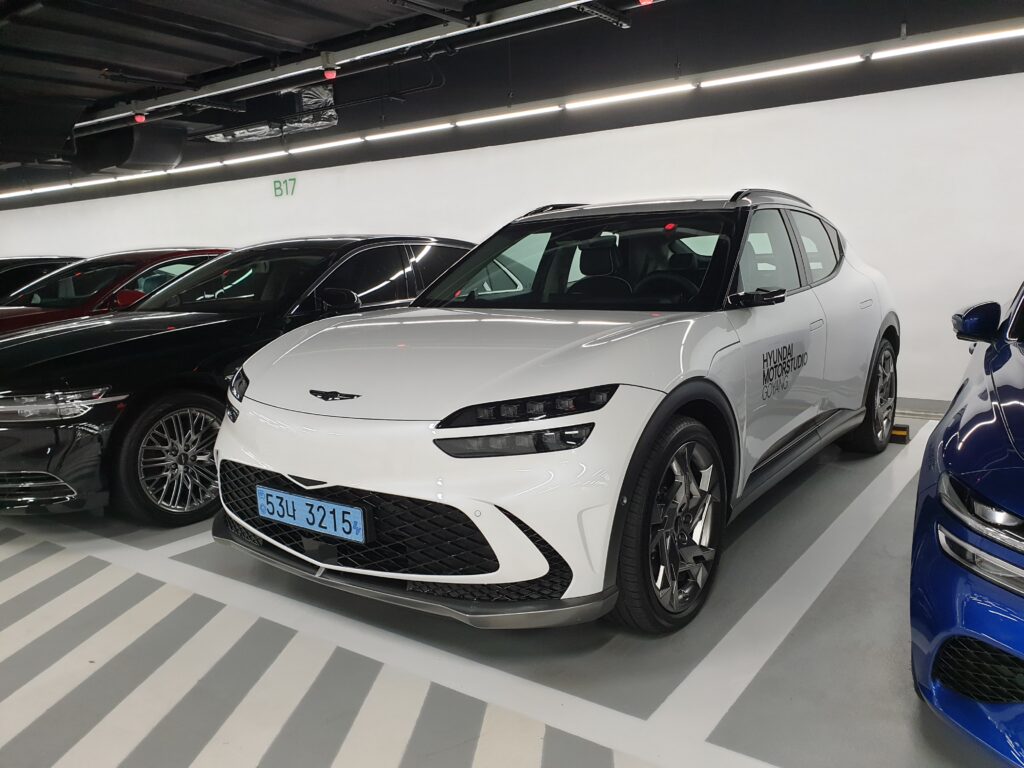
12. **5G Connectivity and V2X Communication: The Connected Road Ahead**The integration of 5G connectivity into 2026 SUVs is set to revolutionize how vehicles communicate with the world around them, transforming the driving experience from isolated transit to a deeply interconnected journey. This advanced cellular technology provides not only lightning-fast internet access for occupants but also enables critical functionalities that enhance safety, efficiency, and convenience.
With 5G, vehicles will benefit from real-time cloud updates, ensuring that navigation systems always have the most accurate and up-to-date traffic and road condition information. This translates to smarter routing, reduced travel times, and a more seamless driving experience. Furthermore, enhanced vehicle diagnostics and software improvements can be pushed to your SUV wirelessly and instantaneously, keeping your vehicle optimized and current without a trip to the dealership.
A particularly impactful application of 5G is Vehicle-to-Everything (V2X) communication. This groundbreaking technology allows your SUV to communicate directly with other vehicles (V2V), roadside infrastructure (V2I), pedestrians (V2P), and the broader network. Imagine your car receiving a warning about a vehicle braking hard several cars ahead, even before you can see it, or being alerted to a pedestrian about to step into the road from behind a parked car.
The implications of V2X are immense for road safety and traffic flow. By facilitating instantaneous information exchange, V2X communication has the potential to significantly reduce collisions, anticipate and alleviate traffic delays, and optimize overall urban mobility. It’s a foundational technology for truly intelligent transportation systems, transforming individual vehicles into integral parts of a smart, responsive road network, making your 2026 SUV a vital node in this interconnected future.

13. **Advanced Driver Monitoring Systems: Ensuring Attentiveness and Safety**As vehicles become increasingly autonomous, the role of the driver remains critically important, particularly in Level 2 and Level 3 semi-autonomous scenarios where human intervention may still be required. This is where Advanced Driver Monitoring Systems (ADMS) come into play, evolving far beyond simple steering wheel nudges to actively ensure driver attentiveness and readiness to take control.
These sophisticated systems employ an array of cameras and infrared (IR) sensors, strategically placed within the cabin, to continuously monitor various aspects of the driver’s state. They track eye gaze, head position, and even subtle body language to detect signs of distraction, drowsiness, or fatigue. If the system perceives that the driver is not paying adequate attention to the road or appears to be falling asleep, it will issue progressive warnings.
Crucially, these advanced monitoring systems are integral to enabling safer semi-autonomous driving. For instance, in a hands-free highway driving scenario, the ADMS ensures that even though the vehicle is handling steering and speed, the driver remains alert and capable of resuming control instantly should the system encounter conditions it cannot manage. This layer of oversight is essential for the safe and responsible deployment of increasingly capable automation.
By ensuring driver engagement and detecting potential impairments, Advanced Driver Monitoring Systems serve as a vital safety net, working in conjunction with other ADAS features to create a more secure driving environment. They represent a proactive approach to safety, acknowledging the human element in the autonomous driving equation and enhancing overall vehicle security by promoting alert and responsive driving habits.
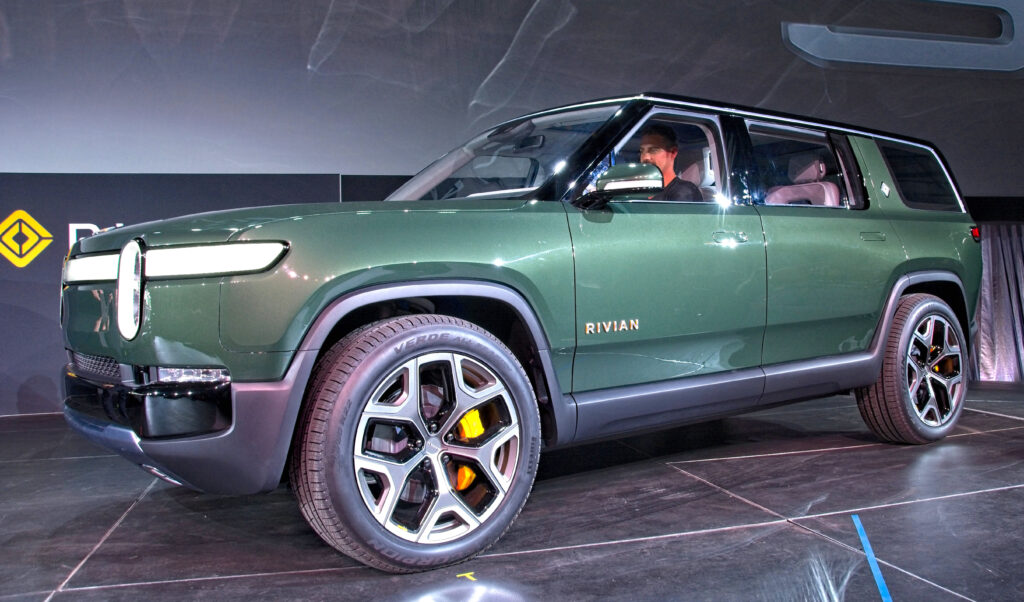
14. **Navigating the Market: Your 2026 SUV Buying Guide for Informed Decisions**The sheer breadth of innovation in the 2026 SUV market, from diverse powertrains to advanced technologies, necessitates a structured approach to buying. Making an informed decision means carefully evaluating your specific needs and matching them against the myriad of options available. This comprehensive buying guide is designed to empower you to choose the best SUV that perfectly aligns with your lifestyle and preferences.
Start by defining your priorities. Are you primarily concerned with maximizing electric range for minimal environmental impact, or is a competitive price point your main driver? Do you prioritize opulent luxury, or is basic, dependable ADAS sufficient for your safety needs? Understanding what matters most to you will significantly narrow down your choices and prevent analysis paralysis in a crowded market.
Next, carefully match the powertrain to your typical driving habits. If city commuting dominates your daily routine, then plug-in hybrids and compact EVs offer substantial savings on fuel and charging costs, leveraging their electric-only capabilities. For those who frequently embark on long-distance journeys, all-electric SUVs with 300+ mile ranges or hybrids equipped with range extenders will provide the necessary flexibility and peace of mind without constant charging stops.
Beyond the core powertrain, thoroughly evaluate the technology and safety features. Compare the specific ADAS suites offered across different trims, looking for features like advanced adaptive cruise control, lane-keeping assist, and emergency braking. Crucially, prioritize vehicles that support Over-The-Air (OTA) updates, as these ensure your vehicle’s technology remains current and continues to improve long after it leaves the dealership, safeguarding your investment.
Finally, always consider the Total Cost of Ownership (TCO), which extends beyond the initial purchase price to include incentives, charging or fuel costs, insurance premiums, maintenance schedules, and projected resale value. While electric models might have a higher upfront cost, their lower running costs can often yield significant long-term savings. And critically, always test drive the specific trim you plan to buy, as optional packages can subtly change vehicle weight and real-world range. Supplement this with trusted real-world range reports, rather than relying solely on EPA estimates, to ensure your chosen SUV truly meets your expectations.
Read more about: Score a Steal: 14 Electric Vehicles Waiting for Astute Buyers to Drive Home Unbeatable Deals
As we’ve explored, 2025 and 2026 are poised to be truly revolutionary years for the SUV and crossover segment. From the thrilling expansion of electric ranges and the intelligent flexibility of hybrid powertrains to the groundbreaking advancements in autonomous driving, sustainable interiors, and hyper-connectivity, the upcoming lineup promises vehicles that are smarter, safer, and more enjoyable to drive than ever before. Whether you’re a tech enthusiast, an eco-conscious commuter, or a family seeking ultimate comfort and safety, the diverse and innovative offerings ensure there’s a perfect SUV on the horizon waiting to redefine your driving experience. The future of personal mobility isn’t just arriving; it’s accelerating, and it’s spectacular. Get ready to embark on your next adventure with the very best of what the automotive world has to offer.

